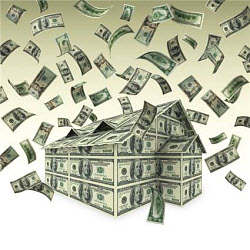 The Federal Reserve was supposed to protect the value of the U.S. dollar – at least that’s how it was originally sold to the public. We still don’t know why the dollar needed “protection”. It was solid for the longest time, except for the time when President Lincoln printed too many of them to pay for the War between the States, but those dollars came and went.
The Federal Reserve was supposed to protect the value of the U.S. dollar – at least that’s how it was originally sold to the public. We still don’t know why the dollar needed “protection”. It was solid for the longest time, except for the time when President Lincoln printed too many of them to pay for the War between the States, but those dollars came and went.
When the Federal Reserve was set up in 1913, the dollar was worth as much on that day as it was when Napoleon Bonaparte set off for Russia.
Instead what the Fed has successfully done is allow the dollar to slip and decline through the 20th century and is now worth only about 3 cents! The likelihood of a continuing decline is strong.
The Great Correction
As long as the Great Correction continues, coupled with historically low interest rates, it will be a great time to invest in real estate.
Thanks to the creation of the Federal Reserve almost 100 years ago, Ben Bernanke has a little “technology” called a printing press. And he knows how to use it!
The Great Correction began about 5 years ago and the feds have been fighting it ever since with trillions of dollars of fiscal and monetary stimulus.
Naturally, the markets and the economy reacted positively and GDP growth resumed in 2009. However, there is no “recovery”. The private sector is correcting and the GDP growth rates have been going down for 40 years.
The feds will continue to fight these disappointing growth rates, and they’ll fight the Great Correction along with it.
The federal government borrows over a trillion dollars a year with no end in sight. Last year, 61% of that money came from… Ben Bernanke’s printing press!
The problem is that most of the growth depends on further spending and money-creation by the feds. This continued money creation will further erode the U.S. dollar through inflation, allowing you to pay off your fixed-rate mortgage with cheaper and cheaper dollars, and eventually making your mortgage worthless.
US Real Estate Today
US real estate may be the best investment of all time today. Adjusted for inflation, housing prices are back to 1979 levels, and mortgage rates are about one-third what they were back then at 15% to 20%. Over the life of a $200,000 mortgage you would pay as much as $700,000 including interest.
Additionally, the typical house sold in 1979 was about 1,600 square feet whereas the average house today is about 2,200 square feet. That’s a difference of $75 per square foot now versus $100 in 1979. That’s a much bigger home.
There are great real estate deals to be found in markets all around the U.S. For example, you can buy 3-bedroom single-family homes between $50,000 to $80,000 in markets like Indianapolis, Atlanta and Kansas City, among others, with rents between $700 and $900 per month. And all of these properties generate double-digit capitalization (cap) rates.
US housing is a better deal now than it has ever been in terms of affordability and value per dollar. To get back to normal affordability levels, the value would have to increase by $100,000.
If you could borrow mortgage loans at the lowest rates in history, and in advance of what could be the greatest inflationary time in U.S. history, wouldn’t you borrow as much as you possibly could?



